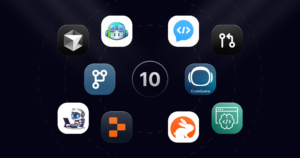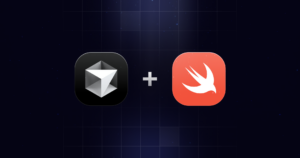Key Takeaways
- The HTML blockquote tag, used to mark a block quote, has been widely adopted by web designers for its semantic usefulness, especially in the era of blogs where quoting other sources is common. Its default visual presentation is simple, with browsers leaving margins on either side of the element.
- The blockquote tag has the potential to create a web of attribution through the little-known cite attribute, which can point to the URL from which the quote was taken. This could allow for powerful analysis tools to track not just who links to a site, but who is quoting it. However, this attribute is rarely used as it doesn’t have a visible effect in most browsers.
- The Microformats community has proposed a user-visible way of using blockquote to build a web of attribution, called cite-rel. This involves pointing the cite attribute of the blockquote to the ID of a cite element, which contains the actual link to the source. This not only creates a structure that search engines can read, but also makes these citations visible to users.
As The Ultimate HTML Reference author Ian Lloyd puts it, “blockquote has been around a long time, but it hasn’t aged a day.” But while the effect of the <blockquote> tag in today’s browsers is virtually unchanged from when it was first introduced in the Web’s earliest browsers, the way we use it has progressed dramatically.
blockquote, of course, is meant to mark a “block quote”—a verbatim reproduction of content originally published or presented elsewhere, presented as a block, apart from the surrounding content. Belying this important purpose, the element’s default visual presentation is quite simple: browsers simply leave left and right margins of about 36 pixels to either side of the element.
Early on in the Web’s history, blockquote was largely ignored. In a time when HTML elements were routinely misused to achieve visual effects, blockquote was seen as the identical twin of dd, since they both have the same visual effect, and because <dd> is shorter to type than <blockquote>, that’s what designers used.
Designers who took pride in the quality of their code quickly found HTML validators (like the W3C’s) didn’t appreciate them using dd for this. dd elements belong inside a definition list (dl), after all. A blockquote, on the other hand, can go anywhere a block element is welcome, so gradually it became the element of choice for producing indentend content.
The more indented a designer wanted content to appear, the more blockquote elements he would wrap it in. This led to some pretty monstrous code, particularly when generated by WYSIWYG authoring tools:
<blockquote>
<blockquote>
<blockquote>
<blockquote>
<blockquote>
<p>A block with a lot of breathing room!</p>
</blockquote>
</blockquote>
</blockquote>
</blockquote>
</blockquote>Of course, today most web designers understand the value of semantically meaningful code. This, and the fact that CSS can be used easily to apply the exact same formatting that blockquote elements get by default, has seen correct use of blockquote rise to dominate in recent years.
Meanwhile, the semantics provided by blockquote are more relevant than ever. Blogs continually quote other blogs and sites, and the blockquote element is perfectly suited to marking up such quotations.
Read on to discover some of the blockquote element’s hidden subtleties, and how it could be used to reveal a web within the Web: a web of attribution.
A Web of Attribution
Many aspects of the Web are based on the concept of links. When I link to you in a blog post, Google counts that as a vote of confidence in your content. Modern blog software even “pings” the target of a link to let it know it has been linked to (this is called a trackback). So in many ways, the Web today is a web of links.
The blockquote element has the potential to create a second “web within the Web”—a Web of attribution. This potential is created by the little-known cite attribute, which is supposed to point to the URL from which the quote was taken.
<blockquote cite="http://example.com/source.html">
<p>A scintillating quote…</p>
</blockquote>If everyone marked up their blockquotes this way, it would open the door to powerful analysis tools of the same sort that we now have for links. Not only would Google be able to tell you who links to you, but it could also tell you who was quoting you.
The problem with the cite attribute, of course, is that almost nobody knows about it—and even fewer people use it! And the reason? In most browsers, it doesn’t do anything.
This is something that the Microformats community really gets—no matter how useful a feature of HTML would be to Google, developers won’t bother using it if that feature won’t be visible to the visitors to the site.
Microformats are ways of using existing features of the HTML language together to make the language do new things, and one of the rules of Microformats is that they are “defined for humans first and machines second.” The fact that a Microformat must be visible and useful to the site’s users gives designers a real reason to use it.
With this in mind, the Microformats community has proposed a way of using blockquote to build a web of attribution in a user-visible way. The draft microformat is called cite-rel, and it looks like this:
<p>
A scintillating quote from <cite id="goodquote"
class="relationship"><a href="http://example.com/source.html"
>someone I respect</a></cite>:
</p>
<blockquote cite="#goodquote">
<p>A scintillating quote…</p>
</blockquote>Instead of pointing directly at the source of the quote, the cite attribute of the blockquote points to the ID of a cite element, which contains the actual link to the source.
Not only does this produce a structure that search engines can read to discover quotations and their sources on the Web, but it makes these citations visible to users, since the citation is ultimately presented in a link.
Next time you whip out a blockquote, consider including a cite attribute to point to the source, and even try out the cite-rel microformat to make that source visible to your users, not just Google!
Frequently Asked Questions (FAQs) about HTML Blockquote Tag
What is the main purpose of the HTML blockquote tag?
The HTML blockquote tag is primarily used to indicate a section of text that is a long quotation from another source. It helps to distinguish the quoted text from the rest of the content, making it easier for readers to understand the context. This tag is often used in blog posts, articles, and other web content that includes quotes or references from external sources.
How does the blockquote tag affect the presentation of text?
The blockquote tag typically indents the quoted text from both the left and right margins when displayed in a browser. However, the actual presentation can vary depending on the CSS styles applied to the blockquote element. It’s important to note that the visual presentation of the blockquote can be customized using CSS.
Can I include other HTML elements within a blockquote tag?
Yes, you can include other HTML elements within a blockquote tag. This includes headings, paragraphs, lists, links, and even other blockquotes. This allows you to structure and format the quoted content as needed.
How do I cite the source of a quote using the blockquote tag?
The HTML5 specification introduced the ‘cite’ attribute for the blockquote tag. This attribute is used to provide the URL of the source of the quotation. However, this citation is not typically displayed on the webpage, but can be used by search engines and other tools to understand the source of the quote.
What is the difference between the blockquote tag and the q tag?
The blockquote and q tags are both used to denote quotations, but they are used in different contexts. The blockquote tag is used for longer quotations that are typically displayed in a separate block of text, while the q tag is used for shorter quotations that are included within a paragraph of text.
Can I nest blockquote tags within each other?
Yes, blockquote tags can be nested within each other. This can be useful when you want to quote a section of text that includes another quotation. Each nested blockquote will be indented further from the left margin.
How does the blockquote tag affect SEO?
The blockquote tag itself does not directly affect SEO. However, it can contribute to the overall quality and structure of your content, which can indirectly influence SEO. By using the blockquote tag appropriately, you can make your content more readable and understandable, which can potentially improve its performance in search engine rankings.
Is the blockquote tag supported in all browsers?
Yes, the blockquote tag is supported in all major web browsers, including Chrome, Firefox, Safari, and Edge. However, the visual presentation of the blockquote can vary between browsers depending on the default CSS styles applied by each browser.
Can I style a blockquote using CSS?
Yes, you can apply CSS styles to a blockquote to customize its appearance. This includes properties like font-size, color, background-color, border, and margin. You can also use pseudo-elements to add quotation marks or other decorative elements.
What is the correct syntax for using the blockquote tag?
The blockquote tag is a paired tag, which means it has an opening tag (
) and a closing tag (). The quoted content is placed between these two tags. If you want to include a citation, you can use the ‘cite’ attribute in the opening tag, like this:
.
Kevin Yank is an accomplished web developer, speaker, trainer and author of Build Your Own Database Driven Website Using PHP & MySQL and Co-Author of Simply JavaScript and Everything You Know About CSS is Wrong! Kevin loves to share his wealth of knowledge and it didn't stop at books, he's also the course instructor to 3 online courses in web development. Currently Kevin is the Director of Front End Engineering at Culture Amp.








